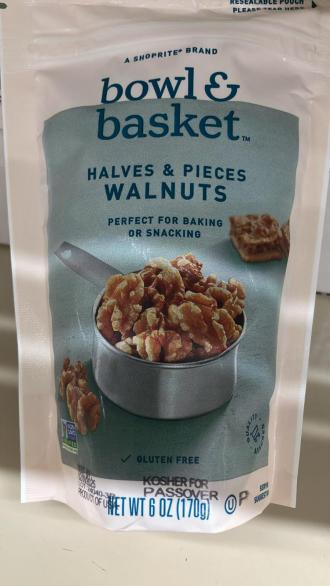Every few years, we hear about changes in the dietary guidelines that the government issues as far as what we are supposed to eat in order to be healthy, ward off disease and stay close to a normal weight. If one goes back to the original food pyramid and compares it to what they call My Plate today, you will notice a very large difference in what was considered good eating, and based on further research, what is considered good eating today. This time, the dietary guidelines for 2015 have two very pronounced changes to them. First, cholesterol levels in foods in and of themselves don’t matter in terms of raising your cholesterol and in addition, and the biggest change, is that the amount of fats in your food have for the first time, taken a back seat to overall calories. Both of the changes should have been made a long time ago. Also this year, the FDA (Federal Drug Administration) recommended the end of Trans Fats in out foods. Trans fats are harmful to your health, there is no benefit in it, and we have seen that with reduction in trans fats use over the last several years, a substantial drop in the amount of deaths from Coronary Artery Disease.
Coincidently, at the same time that all of this news was coming out, a client of mine, Andrea, was complaining that she found herself hungry too often and she just wasn’t losing weight at a reasonable pace as she thought she should be. She was compliant in her daily exercise routine and her overall caloric consumption seemed very close to what she should be eating and losing. After consulting with the dietician, we saw that she had too little fat in her diet and made some changes.
Over the past 40 years, the “public enemy number one” of food has been fat. We spend billions of dollars per year on low-fat foods, fake-fat chips, pills that block the absorption of fat into the digestive system, and all types of specials diets and cookbooks. And, in the past 30 years, we have reduced the amount of fat in our diet by 34% on average. The problem is, we aren’t any thinner or healthier for all this effort. Actually, we are larger and unhealthier than ever. One reasons for this is that there are some fats that are healthy, but we are not including them in our diet.
Let’s take a look at which fats need to remain minimal in your diet and which should be eaten regularly. There are four main categories of fatty acids: saturated, monounsaturated, polyunsaturated, and trans fatty acids.
Fat is essential in our diet.
Incorporating the right type of fats into your diet is equally as important as the amount of fat you consume. Good fats play vital roles in different functions within your body.
Nuts, fish and vegetable oils all provide good fats that benefit your health rather than harm it. Fat aids in Absorption of Fat-Soluble Vitamins and promotes brain functioning as fat accounts for 60% of your brain.
Fat plays a key role in your brain development and health. Omega-3 fats can help prevent stroke and heart disease. The omega-3 fats help protect your body in a variety of ways. They lower inflammation and may reduce pain accompanying it.
Regular intake of omega-3 fats promotes healthy functioning of your metabolic and immune system. They also help prevent stroke and heart disease, aid in contracting and relaxing your artery walls and play a key role in the development of hormones that regulate blood clotting within your body. In addition, they help insulate and protect your nerves and give you energy. Good food sources of omega-3 are flaxseed, fatty fish such as salmon and tuna, walnuts and olive oil.
Saturated Fats These are the fats that harden at room temperature. Approximately 2 dozen saturated fats exist in nature. They are found in large proportion in meat and animal fat, dairy products and palm and coconut oil. We have always thought in the past that these are the fats that can affect your cholesterol and lead to atherosclerosis - the process of clogging of the arteries. However, past research in this area may have been flawed. Although not considered healthy fats, these fats in small amounts may not be harmful. Butter and dairy product animal fats, chocolate and cocoa butter are included in this group.
Trans Fats These man-made fats were created by solidifying a polyunsaturated fat through heating and hydrogen. They help increase the shelf life of foods. Trans fats are found in margarine, products such as Crisco, and in the hydrogenated vegetable oil which is found in food products. BEWARE! These fats are hazardous to your health, and even if a product claims to be free of trans fats, it may still have some. Check the ingredients for hydrogenated or partially hydrogenated oils. If you find that word, then the product contains trans fats regardless of what is stated on the label. And be aware that the latest research has shown us that the harm caused by trans fats is at least twice as damaging as saturated fats. Be careful of purchases baked goods—your beloved rugulach might be causing you more problems than just a lot of calories.
Monounsaturated Fats This fat is liquid at room temperature and is essential in your diet. It is a healthy fat. Olive oil, canola oil, peanut oil, as well at avocados and nuts are excellent sources of this fat. Even grape seed oil, macadamia nut oil and whole wheat products contain some monounsaturated fats.
Polyunsaturated Fats This fat is also liquid at room temperature and comes in two varieties: N-6 and N-3. We get these fats, also important in your diet, from plant oils such as corn and soybean, or seeds, whole grains, and fatty fish such as salmon and tuna. The balance between the N-6 and N-3 is very important. N-6 is more common in oils, so look for omega 3 in order to maintain balance between the two.
The benefits of consuming both monounsaturated and polyunsaturated fats include lowering your LDL (bad cholesterol) and raising your HDL (good cholesterol). They also prevent an increase in triglycerides that can occur in a high carbohydrate diet, reduce the development of irregular heart beats, and reduce the incidence of blood clots. Perhaps just as important, by eating healthy fats you feel satiated and aren’t looking to eat more all the time.
In Summary
Trans fats, found in abundance today, need to be avoided at almost all costs. They have been found to be very aggressive in starting or sustaining the process that leads to clogged arteries. Saturated fats need to be limited, however, it should be noted that some scientists are now researching whether or not saturated fats are indeed so bad for you, or if all the years that trans fats were causing problems, we blamed it on saturated fats. Stay tuned for further developments in this area—we just might end up being very surprised!
As far as Andrea goes, we added a few portions daily of healthful fats such as walnuts, almonds, avocado and olive oil to her diet. After a little more than a week of eating a few less grains and replacing these fats instead, she stopped being hungry and she also started losing weight at a steadier pace.
One of the main things to remember is that eliminating any food group completely, or reducing it to levels that virtually eliminate its benefits, is only going to be detrimental to your health. We need unrefined carbohydrates, we need proteins, and yes - we need fats; but the healthful kind. Eating a balanced diet including healthful fats, and including exercise in our daily lives, is another important way to “add hours to your day, days to your year and years to your life.”
Alan Freishtat is an A.C.E. CERTIFIED PERSONAL TRAINER and a CERTIFIED WELLNESS COACH with over 18 years of professional experience. Alan is the creator and director of the “10 Weeks to Health” program for weight loss. He is available for private coaching sessions, consultations, assessments and personalized workout programs. Alan also lectures and gives seminars and workshops. He can be reached at 02-651-8502 or 050-555-7175, or by email at alan@alanfitness.com Check out the his web site – www.alanfitness.com US Line: 516-568-5027

















